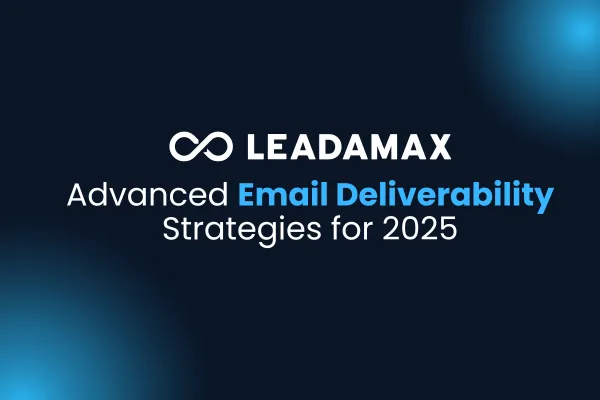
Advanced Email Deliverability Strategies for 2025
Advanced Email Deliverability Strategies for 2025
Email deliverability is evolving fast, and in 2025, new strategies are emerging to help businesses land in the inbox instead of the spam folder. While some of these tactics are becoming industry standards, others are still being debated. Below, we break down the most advanced email deliverability terms and strategies you need to know.
ESP Matching: Aligning Email Providers for Better Results
ESP Matching stands for Email Service Provider Matching. The idea is that Google prefers emails from Google, and Outlook prefers emails from Outlook. Matching your sending domain with the recipient’s ESP can improve deliverability rates.
🔹 Does it work? Yes, but it’s not the biggest concern when launching campaigns. It’s a fine-tuning technique used after finding a winning strategy.
🔹 When to implement: Once you have a working email sequence and fresh Google/Outlook inboxes.
Spintax: Creating Variations to Avoid Spam Filters
Spintax is the process of inserting multiple synonyms or phrases into your email copy to create variations. The goal? Make each email look unique instead of repeating the same message over and over—something spammers do.
🔹 Example:
Instead of writing:
"Hey [First Name], I wanted to follow up."
You could write:
"Hey [First Name], just checking in!"
OR
"Hi [First Name], I wanted to reconnect."
🔹 Do we use Spintax? Not much. AI-generated emails naturally create variation, making Spintax less necessary. Many experts predict that AI will soon become essential for email deliverability rather than just a best practice.
Domain Masking: A New but Controversial Strategy
Domain masking is a new and debated deliverability technique. Here’s how it works:
Instead of sending emails from your main domain (e.g., www.leadamax.com), you buy a similar-looking domain (e.g., www.goleadamax.com).
You set up a redirect from goleadamax.com → leadamax.com
The idea is that this protects your main domain while running large email campaigns.
🔹 Does it work? Some believe it prevents Google from flagging the main domain. However, Google is smart—if it detects spamming behavior across multiple domains, it could penalize them all.
🔹 Potential risks: If Google truly punished main domains based on forwarded domains, then bad actors could intentionally ruin competitors’ deliverability by setting up lookalike domains and spamming. That’s why many experts believe Google won’t implement this kind of penalty.
🔹 Our take: We don’t use this strategy and still get great results without it. If you're experimenting, proceed with caution.
Spam Tests: Glock Apps & Smart Delivery
Spam testing tools like Glock Apps and Smart Delivery allow you to test where your emails land before sending them to real prospects.
🔹 How it works:
You send test emails to a list of seed inboxes.
The tool reports whether they land in Primary, Promotions, or Spam.
🔹 How we use it:
It’s helpful for directional insights, but the most important metric is reply rate.
If a campaign gets at least 1% replies (excluding out-of-office messages), it's considered deliverable.
Even people saying “No” is a good sign—it means your emails are landing in the primary inbox.
Catch-All Domains: Why Some Emails Can’t Be Verified
A catch-all domain accepts emails for any address, even if it doesn’t exist. This makes it hard to validate specific email addresses.
🔹 Why can’t you verify catch-all emails?
Standard validation tools (like ZeroBounce, Debounce) check email formatting, domain existence, and MX records.
However, SMTP verification (which pings the email server) can’t confirm if the email is real or just being "caught."
🔹 What happens if you send to catch-alls?
It increases your bounce rate, which hurts deliverability.
🔹 Our approach:
We don’t send to catch-all domains.
If validation tools can’t verify an email, we move on.
Lessons from Rising Bounce Rates
Over the past six months, bounce rates have increased significantly. Even double-verifying leads isn’t enough.
Why do emails bounce?
1️⃣ The email doesn’t exist.
2️⃣ The email provider thinks you're a spammer.
🔹 How to diagnose bounces:
If you get a 550 error, the inbox thinks you're spam.
Ask ChatGPT or use an SMTP response decoder to understand bounce messages.
🔹 What to do if bounce rates rise:
Change your email copy drastically.
Swap out sending inboxes.
Double-verify leads with tools like MillionVerifier, Debounce, and Lemlist.
Lemlist offers additional insights by checking who has successfully sent emails to that address before.
Final Thoughts: The Future of Email Deliverability in 2025
Email deliverability is becoming more complex, and AI is playing a bigger role in crafting human-like, non-repetitive messaging.
✅ What still works?
Warming inboxes properly.
Sending high-quality, personalized emails.
Monitoring reply rates instead of just inbox placement.
⚠️ What to watch for?
ESP Matching and AI-driven email variations will likely become more critical for inbox placement.
Some experimental techniques (like Domain Masking) may or may not be worth the effort.
At the end of the day, the best email strategy is one that keeps evolving—just like the algorithms that determine deliverability. 🚀
Ready To Elvate Your B2B COMPANY GROWTH
Book A Strategy Session:
